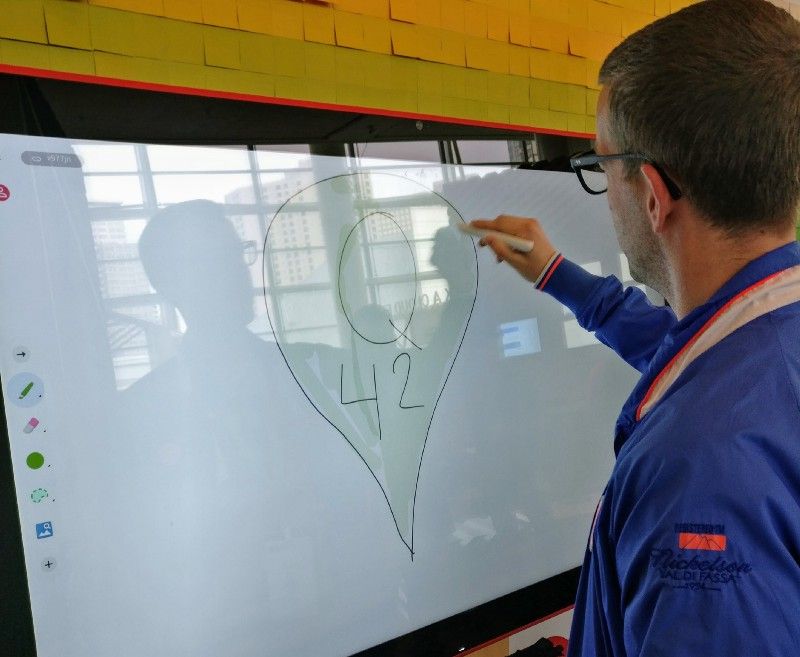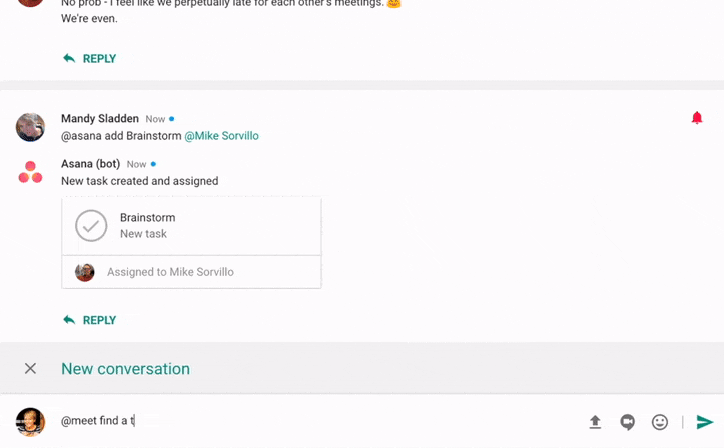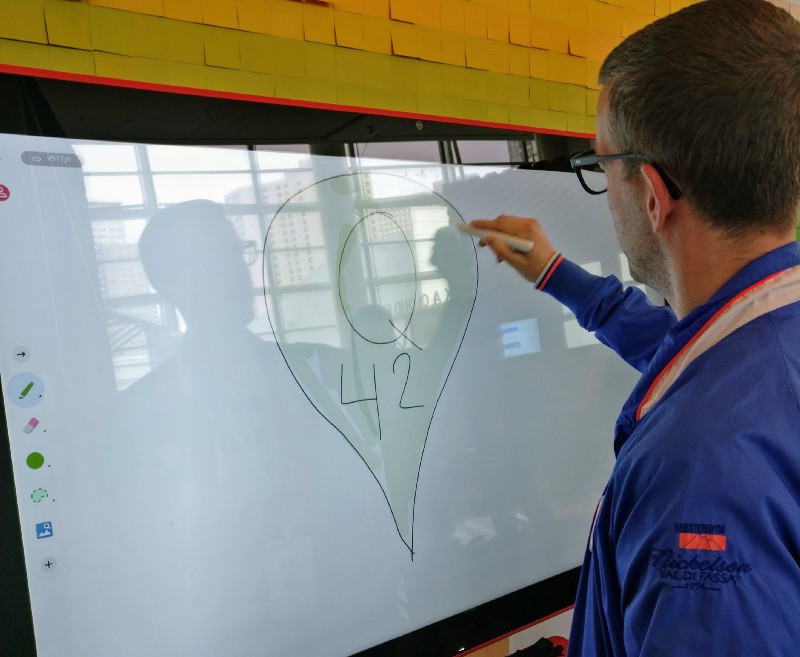Q42 at Google Cloud Next 2017
Recap of the things we learned.

Last week Rahul, Tobias and I visited the Google Cloud Next conference in San Francisco. It was a really interesting week and we learned lots of new stuff.
One thing became clear pretty quickly. Google is doubling down on productivity and collaboration tools for businesses. G Suite (formerly Google Apps for Work) got a lot of attention during the conference. Hangouts Meet was introduced, which is a video conferencing tool designed to make it easy for multiple people to join or schedule a call. Google also announced Hangouts Chat, which is basically a Slack or Microsoft Teams competitor with tight integration for Drive and other G Suite tools.

Google Jamboard
We also played with the Jamboard at the conference which actually works remarkably well! Especially the handwriting recognition works like a charm, can’t wait to get one at our Q42 offices :)

Machine learning
This was another big topic at the conference. There were lots of sessions on machine learning and TensorFlow and some demos on how you can leverage the power of machine learning. To get closer to the community of machine learning experts, Google announced the acquisition of Kaggle, a platform for machine learning competitions.
The Cloud Machine Learning Engine and Cloud Vision API are now generally available and a new API for analyzing videos was introduced. With this Cloud Video Intelligence API, you can detect scene changes and content inside videos, for example you can see which portions of a video contain keywords like “cat”, “dog”, “animal”, “sea”, etc.
We attended sessions to better understand how machine learning works and how you can use it to recognize handwriting. We also learned how you can build on existing ML models to create your own image recognition on mobile devices.
Spanner
Cloud Spanner is a horizontally scalable, globally consistent, relational database service. Well that’s a mouthful :)
It basically means Spanner gives you a nice old fashioned SQL database which scales globally while still supporting all of the transactional benefits of a relational database. This is something of a holy grail in database land, so from a technical standpoint, it’s pretty amazing that Google managed to pull this off 🤘
Cloud Functions
Another word we heard more than once during the conference is “Serverless”. This term is misleading, because of course there is a server involved somewhere down the line :)
Serverless means that you, as a developer, are able to build your (mobile) application without managing a custom backend application and infrastructure. Instead you use services like Firebase or Pub/Sub to implement your backend logic. It was popularised by Amazon’s Lambda service a few years ago, so it’s not surprising Google would introduce their own spin on things here.
Google Cloud Functions really empowers this serverless approach, especially in combination with Cloud Functions for Firebase. It allows you to to “glue” different GCP services together and truly create a mobile application without deploying a custom backend. I attended a session which illustrates this by creating a chat application with authentication and push notifications entirely built with Firebase and Cloud Functions.

Developing for Google Home
Google Home was announced last year at I/O, a “voice-activated speaker powered by the Google Assistant”. We have some experience developing “skills” for Amazon Alexa, so we were curious how the development of an “action” for the Google Assistant would be. It looks like developing for the Google Home is very easy. That’s mostly because of api.ai, a service for creating natural language interactions.
We’re definitely are going to take a deeper dive into development for Google Home during our “Passietijd”, our Wednesday afternoon personal hacking time at Q42. Check out this talk on extending Google Home with a demo of api.ai.
AppEngine Flex
Although this service has already been available for some time (some members of our team were on the early access program), I first heard of this at the conference. AppEngine has always been a great platform for developers to deploy their applications, because you don’t have to manage anything. The downside was that only so many languages were supported and you could only work with a limited number of API’s for example for data storage.
AppEngine flexible environment also works with custom runtimes. You can basically deploy your own Docker container. Once deployed, App Engine Flex will automatically scale your application from zero to planet-scale!
Road tripp’n
It was not just work during this week. Prior to the conference we had some time to explore San Francisco. We rented a car and drove north to Muir woods and south to visit Google, our Q42 office in Moutainview and Santa Cruz.
Since Q42 is a Google Partner, we were invited for networking and drinks at the AT&T stadium, which was pretty awesome!

Wrapping up
At Q42 we have been invested in Google Cloud Platform since the beginning and it’s great to see it evolving over time. GCP is gaining popularity, the conference alone is over 5 times bigger than last year with over 10.000 attendees. Google is focussing on serverless and zero-maintenance services like Firebase and Cloud Functions, we expect to see more of these in the future.
Machine Learning is a powerful concept which lets you build truly awesome user experiences. Services like Cloud Machine Learning and Vision API empower developers to use machine learning in their applications. We expect Machine Learning to have a huge impact on how we use and interact with (IoT) applications in the future.
We had a great time at GCP Next 2017 in San Francisco, see you next year!